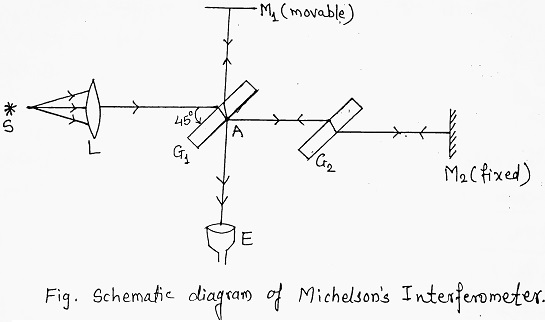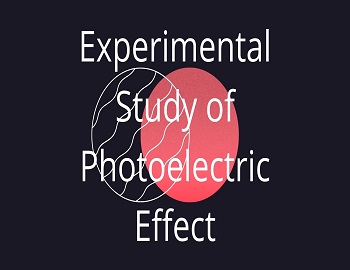Table of Contents
Michelson Interferometer:
What is Interferometer?
An interferometer is a device that can be used to measure lengths or changes in length with greater accuracy, by means of interference fringes. The changes in length are measured by counting the number of interference fringes that pass the field of view. Length measurements made in this way can be accurate if a large number of fringes are counted.
Michelson Interferometer Principle:
It works on the principle of interference in which a light beam from a monochromatic source is divided into two coherent beams by partial reflection and refraction (at semi-silvered glass plate) and made to reunite or superimposed after traversing two different optical paths.
Thus depending on the path difference, dark and bright fringes are observed.
Michelson Interferometer Construction and Working:

| In the figure, S = Monochromatic Source of Light. G1 = Semi-Silvered Glass Plate. G2 = Simple Glass Plate (of the same thickness to) M1 and M2 = Plane Mirrors. E = Eyepiece of Microscope. |
(1) A parallel beam of monochromatic light from source ‘S’ through lens ‘L’ is made to incident on semi-silvered glass plate G1.
(2) At point ‘A’ light is divided into two equal intensities; one after reflection travels towards M1 and gets reflected back along the same path and reappears at ‘A’.
(3) Other half part of light travels towards M2 through G2 and retraces the same path on reflection due to M2 and reappears at A.
(4) Thus at point ‘A’ two coherent light waves derived from the same original wave are made to interfere after passing through two different optical paths in air.
| Note: Their optical paths are same in glass because G1 and G2 are having an equal thickness and both rays crosses the glass plate twicely. G2 is thus used to make a path through glass equal, hence called compensating plate. |
(5) Interference fringes can be seen through a microscope.
(6) When M1 and M2 are perfectly perpendicular, M1 and image of M2 (i.e. M2‘) can be seen. An air film is appeared to be formed between M1 and M2‘ whose thickness can be varied by means of moving mirror M1 and hence any path difference can be introduced.
Depending upon the angle between M1 and M2‘ and the path difference different types of fringes (circular, straight, parabolic) etc. are produced.









Comments (No)